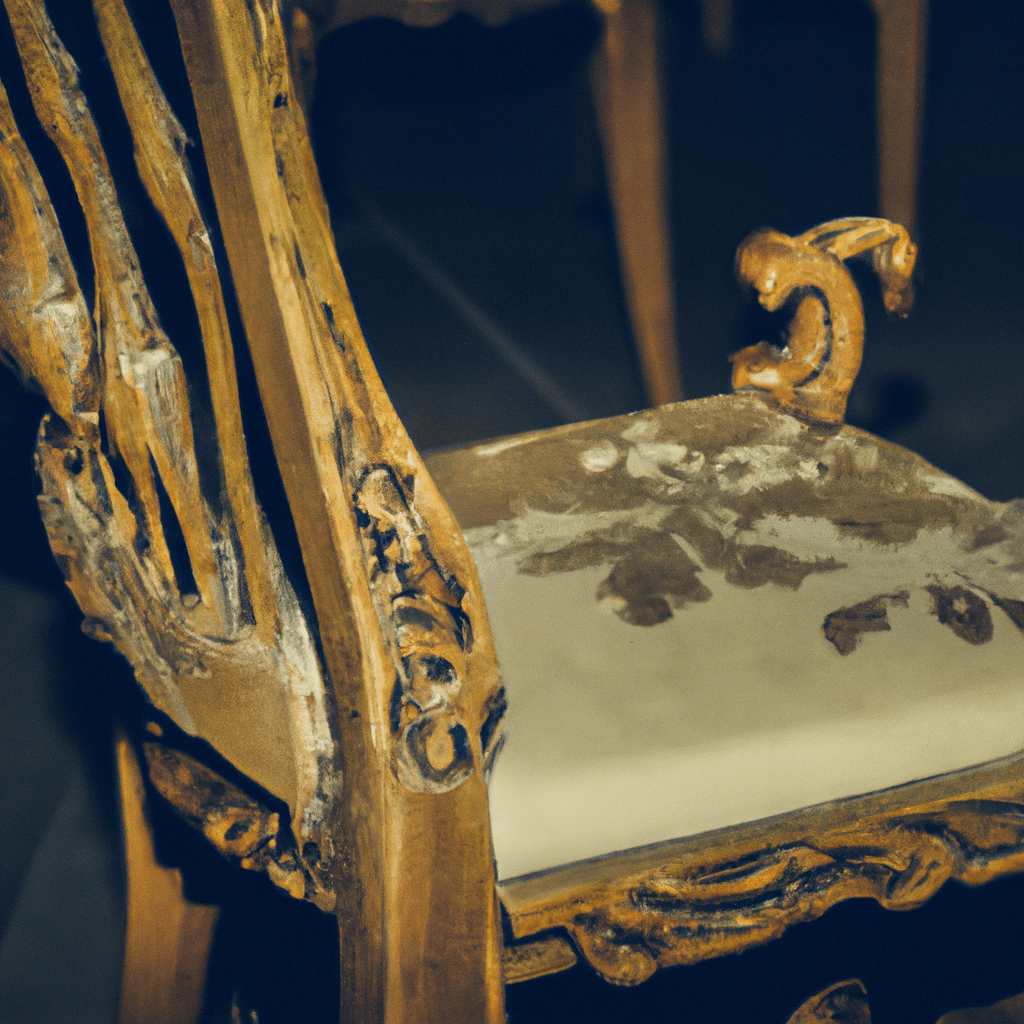Welcome to our comprehensive exploration of historical furniture styles and the hidden symbolism behind their ornate designs. In this article, we delve deep into the rich history of furniture, unearthing the stories and meanings behind various decorative elements. From the Baroque extravagance to the minimalist elegance of the modern era, we aim to provide you with a fascinating journey through time. Join us as we uncover the hidden symbolism within historical furniture and gain a deeper appreciation for these masterpieces.

The Baroque Era: Extravagance and Opulence
The Baroque era, which flourished from the late 16th to the early 18th century, is renowned for its grandeur and opulence. Furniture from this period is characterized by elaborate ornamentation, intricate carvings, and richly gilded surfaces. Every detail in Baroque furniture was carefully crafted to convey a sense of power, wealth, and prestige.
One of the most significant symbols found in Baroque furniture is the use of motifs inspired by nature. Intricate floral patterns, swirling vines, and delicate leaf designs adorned many pieces. These natural motifs represented the abundance and fertility of the natural world, reflecting the wealth and prosperity of the owner.
Additionally, Baroque furniture often featured cherubs and angels, which symbolized divine protection and heavenly blessings. These celestial beings were depicted in various poses, conveying emotions such as joy, love, and serenity. Through the inclusion of cherubic figures, Baroque furniture aimed to invoke a sense of spirituality and connection to the divine.
The Rococo Style: Graceful Curves and Playfulness
Following the Baroque era, the Rococo style emerged in the 18th century, characterized by its emphasis on gracefulness and playfulness. Rococo furniture featured intricate scrollwork, delicate curves, and asymmetrical designs, departing from the heavier and more rigid forms of the previous era.
One of the key symbols within Rococo furniture is the shell motif. Shells were commonly used as decorative elements, representing the beauty and mystery of the ocean. They symbolized fertility, abundance, and the cycle of life. The inclusion of shells in Rococo furniture added a whimsical touch, evoking a sense of enchantment and fantasy.
Another prominent symbol found in Rococo furniture is the use of masks and faces. These whimsical and often humorous faces, known as “grotesques,” adorned mirrors, clocks, and other decorative elements. They symbolized the fleeting nature of life, reminding viewers to embrace joy and laughter amidst the ephemeral nature of existence.
The Neoclassical Period: Elegance and Simplicity
In the late 18th century, a shift towards simplicity and elegance marked the emergence of the Neoclassical period. Inspired by the art and architecture of ancient Greece and Rome, Neoclassical furniture embraced clean lines, symmetry, and a restrained color palette.
One of the most significant symbols in Neoclassical furniture is the use of classical motifs such as laurel wreaths, urns, and Greek key patterns. These symbols were meant to evoke a sense of timeless beauty and intellectual sophistication. They represented the revival of classical ideals and the admiration for ancient civilizations.
Additionally, Neoclassical furniture often featured motifs inspired by nature, such as vines, garlands, and acanthus leaves. These organic elements symbolized growth, renewal, and the harmony between man and nature. By incorporating these motifs, Neoclassical furniture aimed to create a sense of balance and serenity within the space.
The Arts and Crafts Movement: Beauty in Simplicity
At the turn of the 20th century, the Arts and Crafts movement emerged as a reaction against the mass-produced, machine-made furniture of the Industrial Revolution. Led by influential figures such as William Morris, this movement emphasized the importance of craftsmanship, simplicity, and the use of natural materials.
One of the key symbols within Arts and Crafts furniture is the emphasis on handcrafted details. Every piece was meticulously crafted by skilled artisans, highlighting the beauty of traditional craftsmanship. This focus on handmade quality symbolized a return to the values of authenticity, individuality, and human connection.
Another symbol found in Arts and Crafts furniture is the use of organic forms and motifs inspired by nature. Floral patterns, stylized trees, and images of birds and animals were prevalent in this style. These natural motifs represented a deep appreciation for the beauty of the natural world and the importance of preserving it.
Conclusion
In conclusion, historical furniture styles are not merely ornamental but hold deep symbolism and meaning. From the extravagant Baroque era to the elegant simplicity of the Neoclassical period, each style tells a unique story through its design elements and motifs. By understanding the hidden symbolism within these furniture styles, we gain a greater appreciation for the craftsmanship and cultural significance of these masterpieces.
As you embark on your own journey through the world of historical furniture, take a moment to admire the intricate details and symbols hidden within each piece. Whether it’s the opulence of the Baroque, the playfulness of the Rococo, the elegance of the Neoclassical, or the simplicity of the Arts and Crafts movement, let these symbols serve as a reminder of the rich history and artistic legacy that surrounds us.








